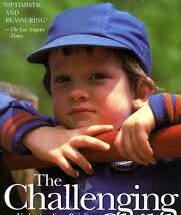
The Child Whisperer by Carol Tuttle: A Comprehensive Guide
Welcome to an in-depth exploration of The Child Whisperer by Carol Tuttle, a transformative book that offers invaluable insights into understanding and nurturing children according to their unique energy types. This article will provide a detailed overview of the book's key concepts, practical applications, and benefits, while also highlighting important keywords and using a color-coded system for emphasis. Additionally, you'll find tables to organize information and links to further resources on our website and blog.
Table of Contents
- Introduction
- Understanding the Four Types of Children
- Practical Tips for Parents
- Benefits of Applying The Child Whisperer Principles
- Conclusion
- Additional Resources
Introduction
Carol Tuttle's The Child Whisperer presents a revolutionary approach to parenting by categorizing children into four distinct energy types. Understanding these types can help parents tailor their parenting strategies to better meet their child's needs, fostering a harmonious and supportive family environment.
Understanding the Four Types of Children
Type 1: The Fun-Loving Child
Type 1 children are characterized by their bright, bubbly, and enthusiastic nature. They thrive in environments where they can express their creativity and spontaneity.
- Traits:
- Energetic and lively
- Sociable and friendly
- Imaginative and creative
- Challenges:
- Difficulty focusing on one task
- Easily distracted
- May struggle with routine and structure
Type 2: The Sensitive Child
Type 2 children are known for their gentle, thoughtful, and caring disposition. They need a calm and nurturing environment to feel secure.
- Traits:
- Empathetic and compassionate
- Detail-oriented and organized
- Thoughtful and considerate
- Challenges:
- Overwhelmed by too much stimulation
- Can be overly cautious
- May have difficulty asserting themselves
Type 3: The Determined Child
Type 3 children are dynamic, active, and strong-willed. They need opportunities to express their independence and take on challenges.
- Traits:
- Adventurous and bold
- Goal-oriented and ambitious
- High energy and physical
- Challenges:
- Impatient and easily frustrated
- Can be seen as aggressive
- Struggles with authority
Type 4: The More Serious Child
Type 4 children are analytical, precise, and independent thinkers. They thrive in environments that respect their need for autonomy and structure.
- Traits:
- Logical and systematic
- Self-reliant and independent
- Deep thinkers and problem-solvers
- Challenges:
- Can be perceived as aloof or detached
- Struggles with flexibility
- May be critical of themselves and others
Practical Tips for Parents
Creating a Supportive Environment
To create a supportive environment for each child type, consider the following tips:
| Child Type | Environment Tips |
|---|---|
| Type 1 | Bright, colorful spaces; opportunities for creative play and expression |
| Type 2 | Calm, peaceful environments; cozy and comfortable spaces |
| Type 3 | Active, engaging settings; spaces that allow for movement and physical activities |
| Type 4 | Organized, structured environments; quiet areas for concentration and deep thinking |
Effective Communication Strategies
Effective communication is crucial for nurturing each child's unique needs:
- Type 1: Use positive reinforcement and encourage their ideas.
- Type 2: Be gentle and patient, acknowledging their feelings.
- Type 3: Be direct and clear, offering choices to channel their energy.
- Type 4: Provide logical explanations and respect their independence.
Encouraging Growth and Development
Encouraging each child's growth and development involves recognizing their strengths and providing appropriate challenges:
- Type 1: Offer creative projects and group activities.
- Type 2: Support their hobbies and interests, providing structured activities.
- Type 3: Set clear goals and offer opportunities for leadership and adventure.
- Type 4: Encourage problem-solving activities and respect their need for autonomy.
Benefits of Applying The Child Whisperer Principles
Applying the principles from The Child Whisperer can lead to numerous benefits for both parents and children:
- Improved Parent-Child Relationships: Understanding and meeting each child's unique needs fosters stronger bonds and mutual respect.
- Enhanced Communication: Tailored communication strategies lead to better understanding and fewer conflicts.
- Greater Emotional Well-being: Children feel valued and understood, which boosts their self-esteem and emotional health.
- Personal Growth: Parents become more empathetic and skilled in handling diverse personalities.
Conclusion
Carol Tuttle's The Child Whisperer offers a valuable framework for understanding and nurturing children's unique energy types. By applying the principles outlined in the book, parents can create a more harmonious and supportive family environment, fostering their child's growth and well-being.
Additional Resources
For more information on The Child Whisperer and related topics, visit our website and blog. Here, you'll find a wealth of resources, including book reviews, parenting tips, and more.



